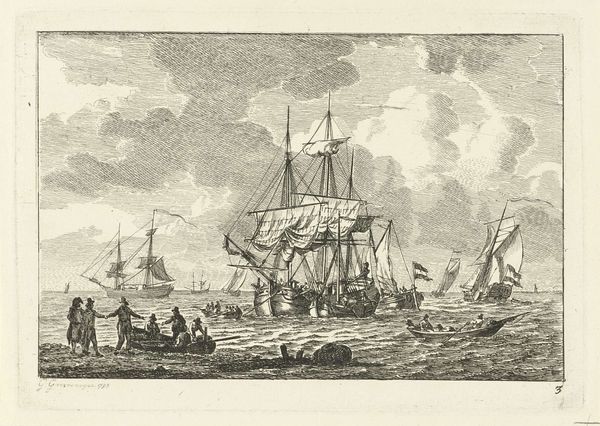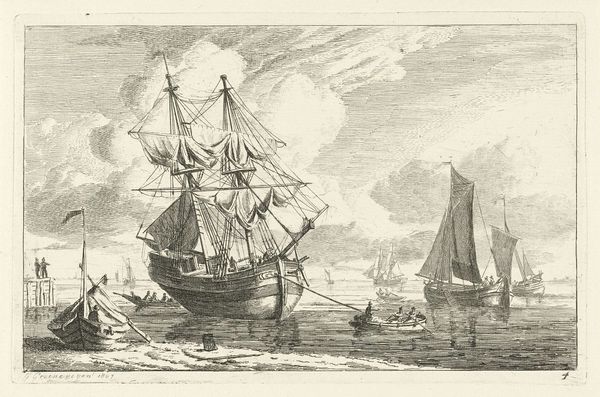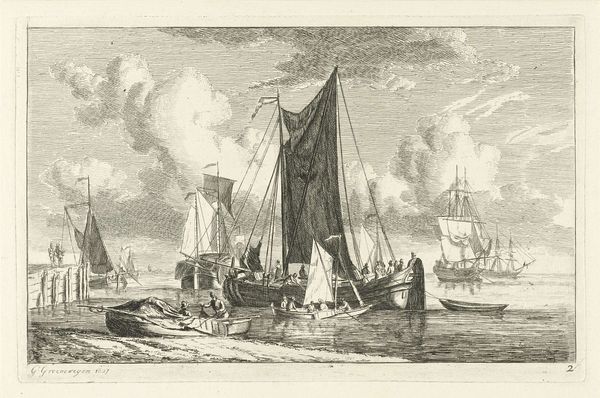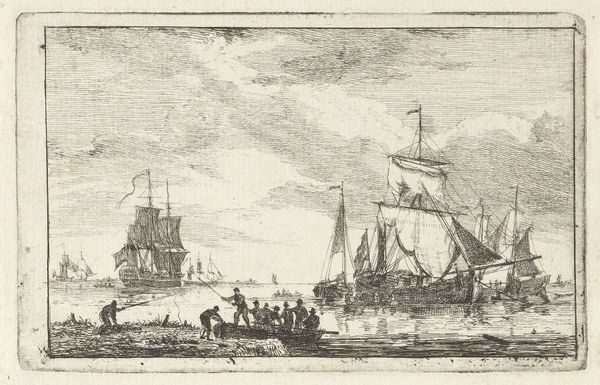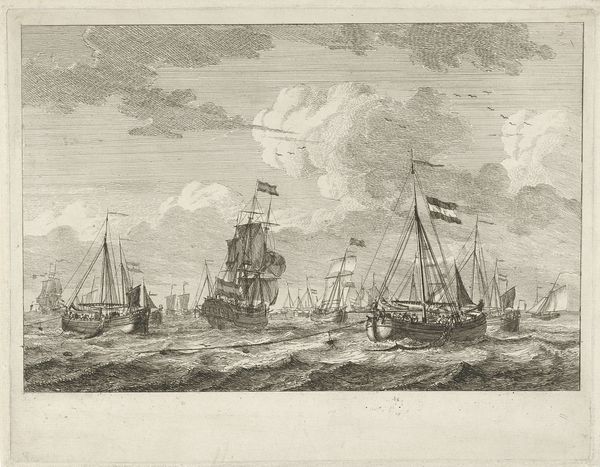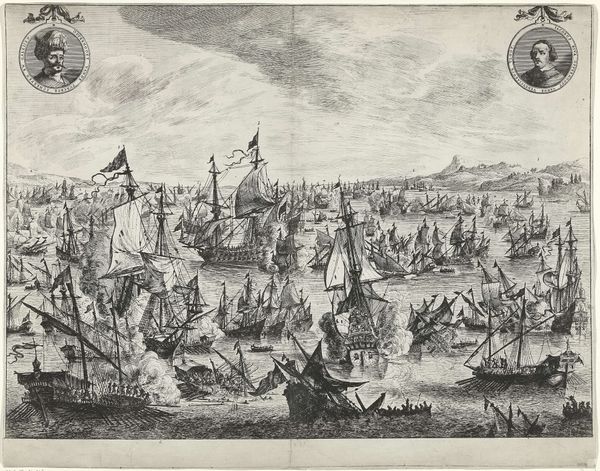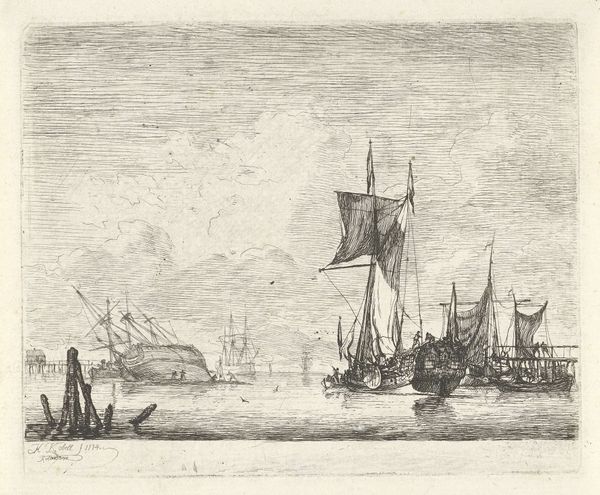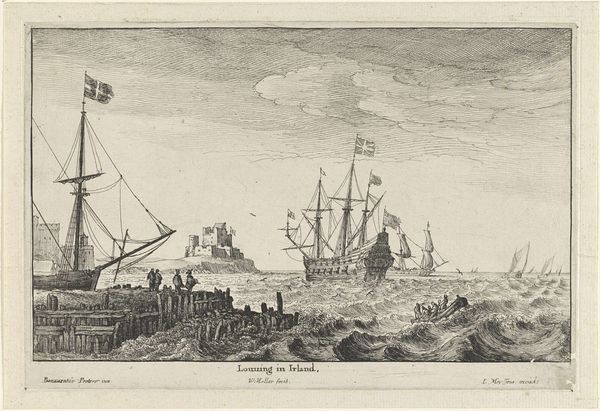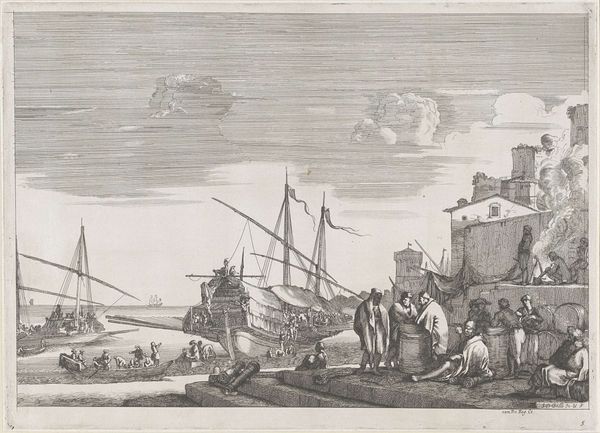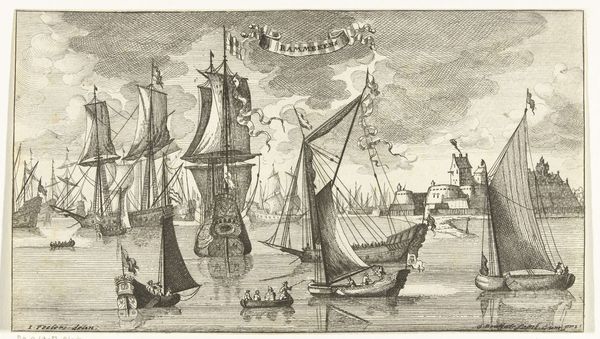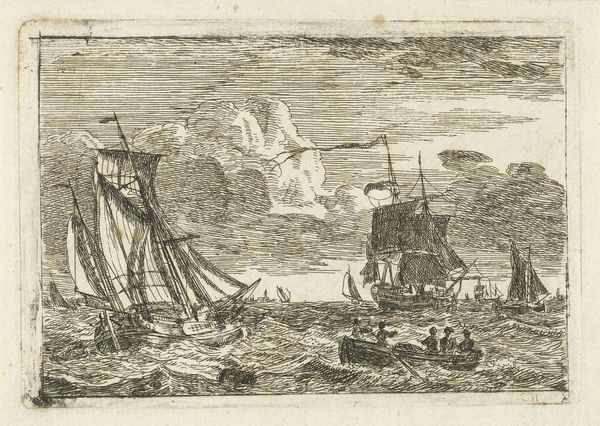
print, engraving
#
baroque
#
dutch-golden-age
# print
#
landscape
#
line
#
cityscape
#
engraving
Dimensions: height 183 mm, width 311 mm
Copyright: Rijks Museum: Open Domain
Editor: We’re looking at “Zeehaven met schepen die binnen varen,” a print by Matthieu van Plattenberg, made sometime between 1617 and 1660. It's incredibly detailed, a bustling harbor scene rendered in precise lines. There's a palpable tension between the chaotic waves and the stoic architecture. What do you see in this piece, particularly beyond the surface of a historical record? Curator: Beyond the immediate portrayal of maritime activity, I see a representation deeply entwined with the Dutch Golden Age’s identity formation. The ships symbolize not only trade and exploration, but also the darker aspects of colonial expansion: exploitation and displacement. Notice how the fortified architecture looms – what do you make of the composition? Editor: It's striking. The fortress almost dwarfs the ships. Is it a celebration of Dutch power? Curator: Perhaps, but I think there's also a subtle critique embedded. These fortresses are, in many ways, monuments to exclusionary power. They represent the boundaries enforced to protect the very wealth these ships bring, which, let's not forget, was often built upon the backs of enslaved people. The cityscape isn't just a neutral background, it's a stage for power dynamics, for inequality. Do you see any signs of that human cost? Editor: Well, the figures along the shore are small and almost indistinguishable… their labor seems to fade into the landscape. Curator: Exactly. That visual shrinking is not accidental. It reinforces whose stories get told and whose are systematically erased. Editor: That’s… sobering. I came in seeing a beautiful historical print, but now I see layers of social commentary and perhaps a discomforting legacy. Curator: Indeed. Art often holds uncomfortable truths, and grappling with those complexities is part of understanding its power and relevance today. I find it truly poignant and useful that these artworks encourage crucial conversations on colonialism and socioeconomic disparities that echo through time.
Comments
No comments
Be the first to comment and join the conversation on the ultimate creative platform.

